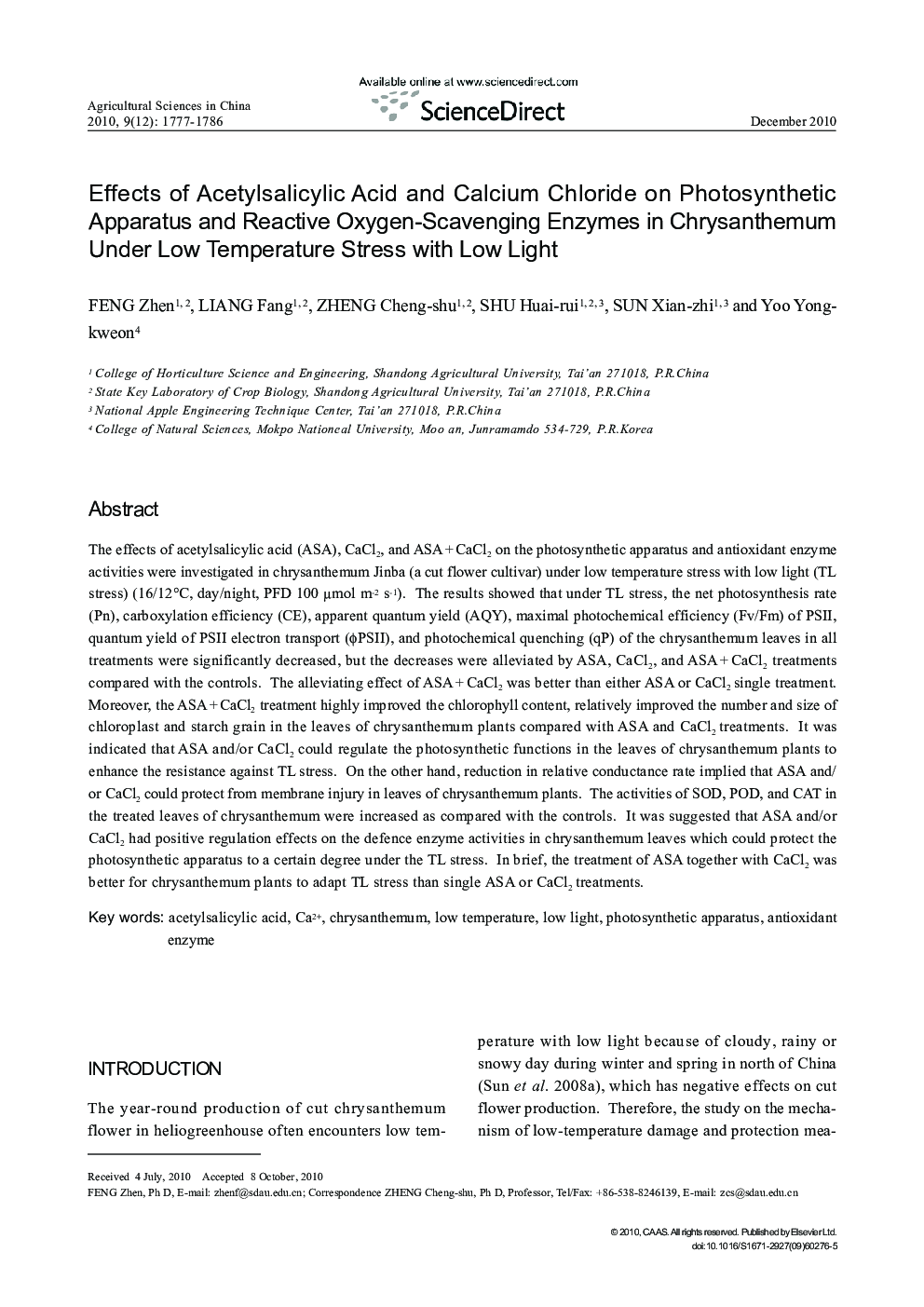| Article ID | Journal | Published Year | Pages | File Type |
|---|---|---|---|---|
| 4489986 | Agricultural Sciences in China | 2010 | 10 Pages |
The effects of acetylsalicylic acid (ASA), CaCl2, and ASA + CaCl2 on the photosynthetic apparatus and antioxidant enzyme activities were investigated in chrysanthemum Jinba (a cut flower cultivar) under low temperature stress with low light (TL stress) (16/12°C, day/night, PFD 100 μmol m-2 s-1). The results showed that under TL stress, the net photosynthesis rate (Pn), carboxylation efficiency (CE), apparent quantum yield (AQY), maximal photochemical efficiency (Fv/Fm) of PSII, quantum yield of PSII electron transport (øPSII), and photochemical quenching (qP) of the chrysanthemum leaves in all treatments were significantly decreased, but the decreases were alleviated by ASA, CaCl2, and ASA + CaCl2 treatments compared with the controls. The alleviating effect of ASA + CaCl2 was better than either ASA or CaCl2 single treatment. Moreover, the ASA + CaCl2 treatment highly improved the chlorophyll content, relatively improved the number and size of chloroplast and starch grain in the leaves of chrysanthemum plants compared with ASA and CaCl2 treatments. It was indicated that ASA and/or CaCl2 could regulate the photosynthetic functions in the leaves of chrysanthemum plants to enhance the resistance against TL stress. On the other hand, reduction in relative conductance rate implied that ASA and/ or CaCl2 could protect from membrane injury in leaves of chrysanthemum plants. The activities of SOD, POD, and CAT in the treated leaves of chrysanthemum were increased as compared with the controls. It was suggested that ASA and/or CaCl2 had positive regulation effects on the defence enzyme activities in chrysanthemum leaves which could protect the photosynthetic apparatus to a certain degree under the TL stress. In brief, the treatment of ASA together with CaCl2 was better for chrysanthemum plants to adapt TL stress than single ASA or CaCl2 treatments.
